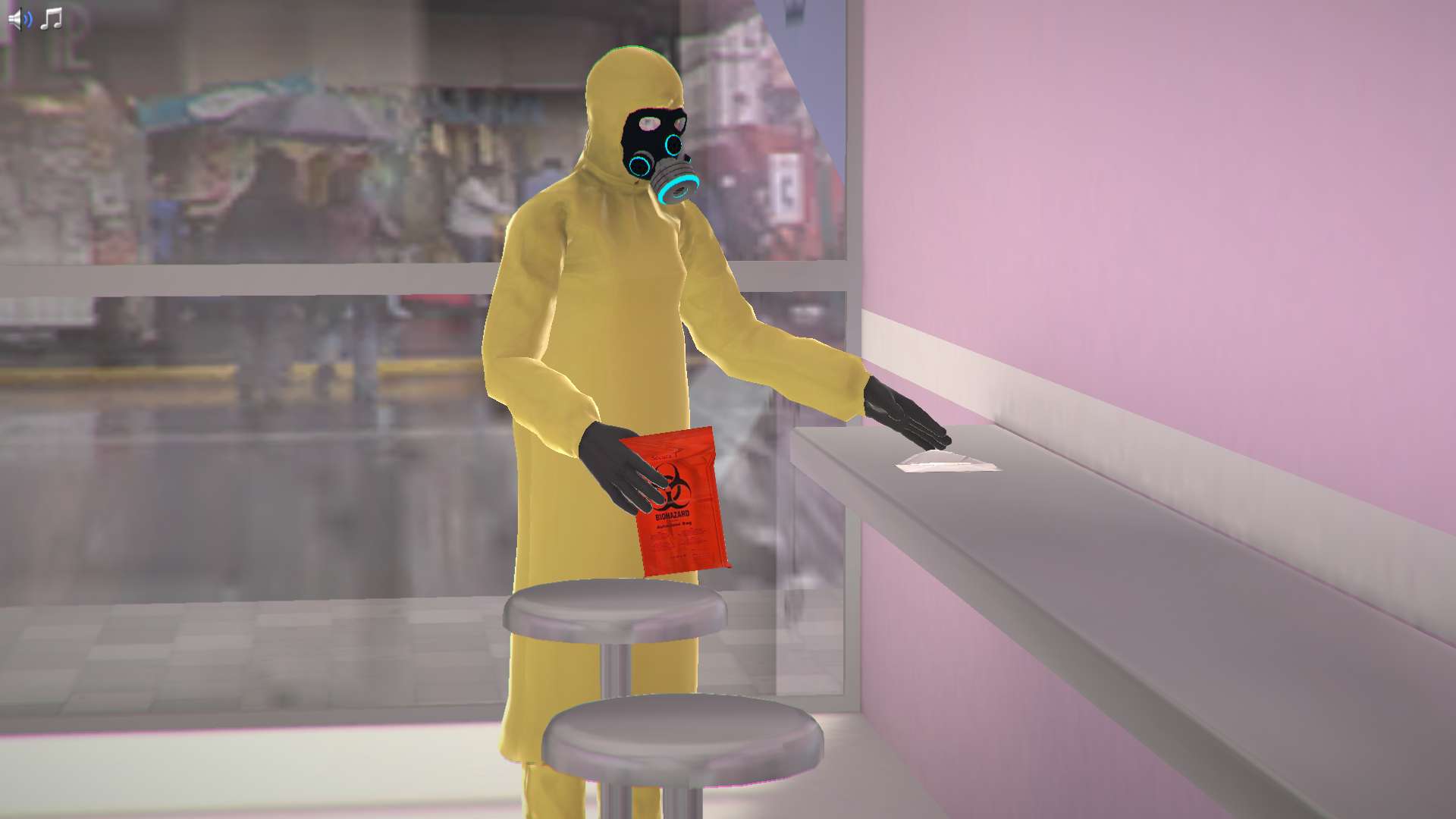Heading 1
Heading 2
Heading 3
Heading 4
Heading 5
Heading 6
Lorem ipsum dolor sit amet, consectetur adipiscing elit, sed do eiusmod tempor incididunt ut labore et dolore magna aliqua. Ut enim ad minim veniam, quis nostrud exercitation ullamco laboris nisi ut aliquip ex ea commodo consequat. Duis aute irure dolor in reprehenderit in voluptate velit esse cillum dolore eu fugiat nulla pariatur.
Block quote
Ordered list
- Item 1
- Item 2
- Item 3
Unordered list
- Item A
- Item B
- Item C
Bold text
Emphasis
Superscript
Subscript
About This Simulation
Introduction to containment level 3 (Biosafety level 3, BSL3) research laboratory, a hypothetical approach to identifying a potential bioterrorism agent that is classed as a hazard group three microorganism.
Learning Objectives
- Understand how a Biosafety containment level III laboratory is constructed (e.g. air flow and pressure control)
- Understand the basic safety rules of a Biosafety containment level III laboratory (e.g. use of safety equipment)
- Handle microorganisms in a Biosafety containment level III laboratory
- Understand the concept of fumigation and how this is executed within a microbiological safety cabinet.
About This Simulation
Lab Techniques
- Microscopy
- Bacteria inoculation
- Containment Level 3 good practice and aseptic technique
Related Standards
- Lab safety support
- Generic lab safety support
- Supports The Laboratory Safety Institute’s Laboratory Safety Guidelines
Learn More About This Simulation
In the Biosafety simulation, you will be introduced to the concept of laboratory containment, which is a very special type of laboratory required to work with hazardous pathogens.
Laboratory containment
Containment in this context refers to the requirements set out by various bodies to safely manipulate such pathogens. In this simulation, you will be able to experience a containment level 3 (Biosafety level 3 or BSL3) research laboratory.
Learn about lab safety
You will become familiar with the basic protocols utilized to ensure safety, and you will be presented with the specific basic safety rules for this type of laboratory (e.g. personal protective equipment (PPE) and primary containment). In addition, you will learn how every part of the laboratory is designed to avoid contamination. This includes learning about why the pressure in the laboratory needs to be controlled at all times (secondary containment), and how the microbiological safety cabinets are designed to offer protection).
Identify the hazard
In the Biosafety simulation you will be presented with a hypothetical case where you will need to identify a potential bioterrorism agent that is classed as hazard group three microorganism.
Please note that this simulation has been developed broadly around UK regulations. Some protocols may differ depending on the specific regulations.
For Science Programs Providing a Learning Advantage
Boost STEM Pass Rates
Boost Learning with Fun
75% of students show high engagement and improved grades with Labster
Discover Simulations That Match Your Syllabus
Easily bolster your learning objectives with relevant, interactive content
Place Students in the Shoes of Real Scientists
Practice a lab procedure or visualize theory through narrative-driven scenarios


FAQs
Find answers to frequently asked questions.
Heading 1
Heading 2
Heading 3
Heading 4
Heading 5
Heading 6
Lorem ipsum dolor sit amet, consectetur adipiscing elit, sed do eiusmod tempor incididunt ut labore et dolore magna aliqua. Ut enim ad minim veniam, quis nostrud exercitation ullamco laboris nisi ut aliquip ex ea commodo consequat. Duis aute irure dolor in reprehenderit in voluptate velit esse cillum dolore eu fugiat nulla pariatur.
Block quote
Ordered list
- Item 1
- Item 2
- Item 3
Unordered list
- Item A
- Item B
- Item C
Bold text
Emphasis
Superscript
Subscript
A Labster virtual lab is an interactive, multimedia assignment that students access right from their computers. Many Labster virtual labs prepare students for success in college by introducing foundational knowledge using multimedia visualizations that make it easier to understand complex concepts. Other Labster virtual labs prepare learners for careers in STEM labs by giving them realistic practice on lab techniques and procedures.
Labster’s virtual lab simulations are created by scientists and designed to maximize engagement and interactivity. Unlike watching a video or reading a textbook, Labster virtual labs are interactive. To make progress, students must think critically and solve a real-world problem. We believe that learning by doing makes STEM stick.
Yes, Labster is compatible with all major LMS (Learning Management Systems) including Blackboard, Canvas, D2L, Moodle, and many others. Students can access Labster like any other assignment. If your institution does not choose an LMS integration, students will log into Labster’s Course Manager once they have an account created. Your institution will decide which is the best access method.
Labster is available for purchase by instructors, faculty, and administrators at education institutions. Purchasing our starter package, Labster Explorer, can be done using a credit card if you are located in the USA, Canada, or Mexico. If you are outside of North America or are choosing a higher plan, please speak with a Labster sales representative. Compare plans.
Labster supports a wide range of STEM courses at the high school, college, and university level across fields in biology, chemistry, physics, and health sciences. You can identify topics for your courses by searching our Content Catalog.















